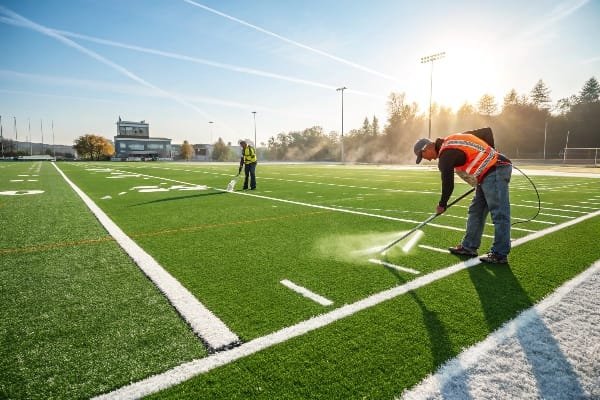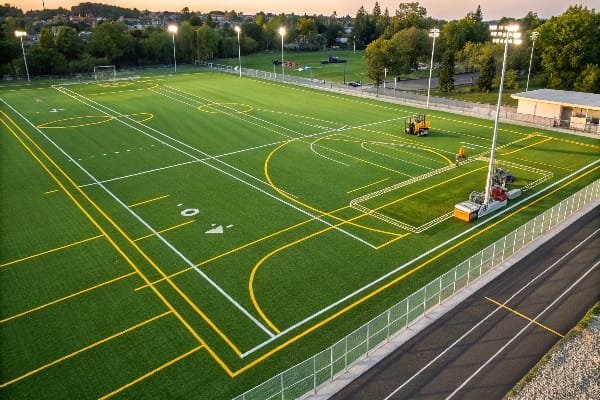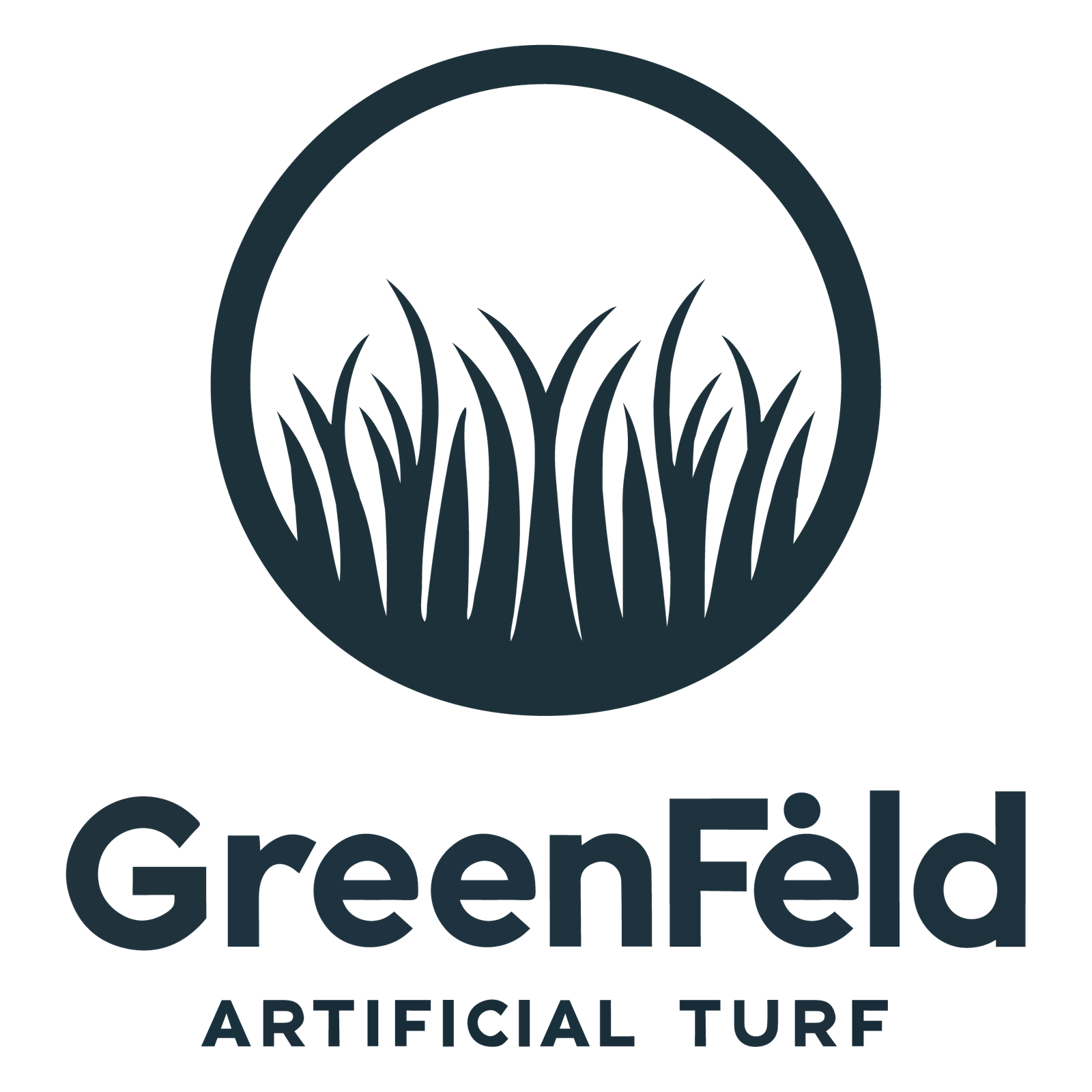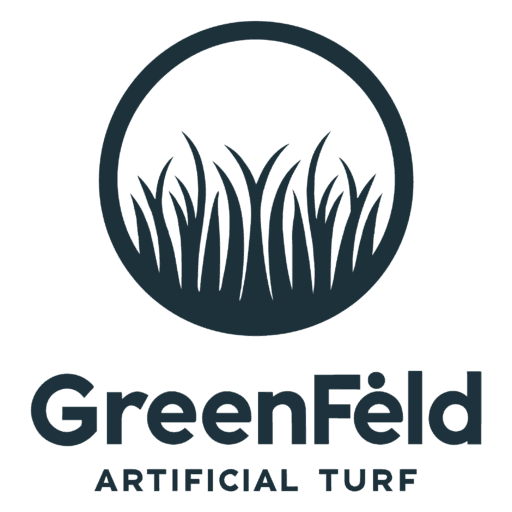I see many fields with faded or uneven lines. This can frustrate athletes and organizers. I believe that picking the right way to mark lines is vital.
It is possible to use paint, chalk, tape, or inlaid artificial turf strips to mark lines. Each method offers different costs, maintenance schedules, and durability. The best choice depends on budget and field usage.

marking methods
I want to explore these marking methods in detail. I hope this will help field owners and managers find the ideal option.
What can be used to mark the field?
Some people assume paint is the only solution. I felt the same at first. Then I discovered many alternatives.
Popular field marking methods include paint, chalk, adhesive tape, and inlaid artificial turf. Each brings unique benefits, costs, and maintenance demands.

marking methods
Dive Deeper
I have experimented with different field marking materials. I learned that each option has pros and cons that affect both short-term costs and long-term performance. I will explain them from my perspective.
First, paint is a traditional solution. It is easy to spray, and the lines look clear right after application. However, the lines may wear down in high-traffic zones and require frequent touch-ups. This can disrupt regular field usage. If a sports venue hosts many events, repainting can become a weekly chore. This leads to added time and labor costs.
Next, chalk is a budget-friendly route that many schools and amateur clubs choose. It requires a lining machine or a chalker to create crisp lines. Chalk is easy to remove with water or by simple wear and tear. This works well for fields that switch sports often, such as soccer in one season and lacrosse the next. The downside is that chalk fades fast, especially in wet or humid environments. It may demand multiple re-markings if the field sees daily use.
Tape can also mark fields. This is helpful for short-term events or temporary lines. I have seen tape used in events like summer camps or weekend tournaments. Groundskeepers peel it up after the match, leaving no residue for the next event. However, the tape can come loose if the grass is wet or if players pivot heavily on it. This can ruin the lines in the middle of a game.
Inlaid artificial turf lines are the most permanent. I find them to be highly durable. During the installation, a crew cuts out strips of turf and replaces them with contrasting colored turf, usually white. This method can be more expensive upfront, and it takes skilled labor. Yet once in place, these lines offer long-term savings because they do not need repainting or re-chalking. Weather does not affect them much, and they can endure heavy use without losing their bright color. In my experience, using white artificial turf for inlays is more complicated during setup, but from a longevity standpoint, it is the best solution. It saves time and labor in the long run, and the field stays consistent season after season.
I made a quick summary table to compare the four main methods:
| Method | Cost | Durability | Maintenance Frequency |
|---|---|---|---|
| Paint | Moderate | Medium | Frequent re-painting |
| Chalk | Low | Low | Very frequent |
| Tape | Variable | Low-Medium | Moderate |
| Inlaid Artificial Turf | High | High | Low |
When comparing them, I look at how often the field is used, the level of professional appearance needed, and how much downtime I have for upkeep. Paint or chalk might suffice for fields with casual or occasional usage. Inlaid lines are superior for professional stadiums or high-traffic venues. My personal insight is that going with white artificial turf inlays is the best long-term choice, even if it demands more work during installation.
How to mark a field without paint?
Some facilities cannot use paint due to budgets, environmental rules, or local regulations. I have encountered this hurdle before, so I looked at other solutions.
You can use chalk, adhesive tape, or inlaid lines to avoid paint. Chalk is cheap but fades quickly. Tape is easy but can shift. Inlaid turf lines remain permanent.

no paint marking
Dive Deeper
I have seen many venues shift from paint to alternate marking solutions. Some are concerned about chemical runoff from paints. Others need flexible lines for varied sports. If paint is off-limits, I see three strong choices: chalk, tape, or inlaid lines.
Chalk is usually the first choice for a paint-free approach. It is low-cost and available at most sports supply shops. Grounds crews can quickly apply chalk lines. This is a bonus when you have multiple events or sudden schedule changes. Rain, sprinklers, or vigorous play will wash or scuff the chalk away. That is both a blessing and a curse. On one hand, you can easily clear old lines to draw new ones. On the other hand, you must re-chalk the field whenever lines fade or vanish. For a busy venue, this can be an ongoing task that takes up resources and labor hours.
Tape is another paint-free method. I have used it for short competitions or special events. If the tape is high-grade and the grass is well-prepared, it can stay intact for the duration of the match. Afterward, you peel it up and discard it. This keeps the field clean and reduces downtime. However, some tapes do not stick well to damp or uneven surfaces. If a player makes a sliding tackle on the tape, the tape might peel or move, causing confusion. Tape can also fail if heavy foot traffic occurs in small sections of the field.
Inlaid artificial turf lines offer a long-lasting, paint-free alternative. I like this approach because it eliminates constant re-marking. I have seen fields with inlaid lines that stay in excellent condition for many seasons. The key is the careful process of cutting and securing new turf strips in place of the old. This step is more complicated than applying chalk or tape, so it requires professional tools and expertise. But once done, the lines are permanent. They do not fade in sunlight or wear away with heavy foot traffic. This keeps the field looking neat and professional. It also frees up grounds crews to focus on other tasks.
When deciding among chalk, tape, or inlaid lines, I consider the usage pattern of the field, the local climate, and the need for multi-sport flexibility. If you must change lines often, chalk or tape might suit you best, even with the annoyance of reapplication. If you need a permanent, paint-free solution, inlaid artificial turf lines stand out as the most robust choice. I have recommended them to many clients who want a polished look without relying on paints or chemicals. The labor and expense at the start might be higher, but the long-term payoff is typically worth it.
How do they stripe football fields?
I sometimes watch football games and see those perfect stripes across the field. This pattern looks professional and impresses fans. It also helps me see how well the field is maintained.
Grounds crews create stripes by mowing or brushing the grass in alternating directions. This changes how the light reflects off the blades, forming dark and light bands.

striped football field
Dive Deeper
I remember the first time I tried to stripe a small practice field. I used a basic push mower with a roller attachment. I noticed that when I mowed the grass in one direction, the blades bent and caught the light differently than when I mowed in the opposite direction. On television, this contrast is more dramatic. In person, you can see lighter stripes and darker stripes depending on the angle of the bent grass. Professional stadiums use large reel mowers or specialized grooming machines to produce these stripes evenly.
It begins by planning a mowing pattern. One approach is to mow parallel stripes down the length of the field. Another is to create a checkerboard effect by first mowing lengthwise, then going perpendicular for the next pass. Some stadiums even do diagonal stripes or arcs, although that requires experienced operators. The height of the grass also influences how visible the stripes are. Short grass can show stripes, but medium-length grass often reveals more pronounced contrasts.
Regular maintenance is key. Groundskeepers typically follow a schedule to water, fertilize, and aerate the field. This keeps the grass healthy so it can stand up after being mowed or brushed. If the grass is too long, the stripes can look messy. If it is too short, the field might suffer stress and become patchy. The right height helps the pattern remain sharp. Also, healthy turf recovers faster from heavy play, which is crucial in high-contact sports like football.
It is important to note that striping is separate from painting or marking field boundaries. You still need those lines to show the sidelines, end zones, and yard markers. Sometimes these official lines are painted on top of the stripe pattern. In certain artificial turf fields, permanent inlaid lines replace the need for paint, though striping can still be simulated. Instead of bending real grass, the turf crew might brush or roll the synthetic fibers in alternating directions.
I find striped fields captivating because they show the dedication that goes into maintenance. Players enjoy running on a field that looks as good as it feels. Fans appreciate the aesthetic. Groundskeepers can take pride in their craft. Some might wonder if the stripes help the game itself. In my view, it mostly aids in presentation. It can also help the officiating crew see yard increments, but the main lines still do the real work in that regard.
Striping methods are not too complex, yet they demand patience and attention to detail. You need to mow or brush slowly and consistently, following the same tracks for each pass. If you rush or miscalculate, you might see a crooked stripe on game day. Good planning, the right equipment, and a healthy turf are all keys to achieving those crisp, beautiful patterns. I enjoy the process because it is both functional and artistic. It gives each field a signature appearance, reflecting the care taken to provide the best possible playing surface.
Conclusion
Lines matter on sports fields. I believe in finding the right marking system for the field’s budget and needs. Inlaid artificial turf lines are best for durability and long-term savings.

